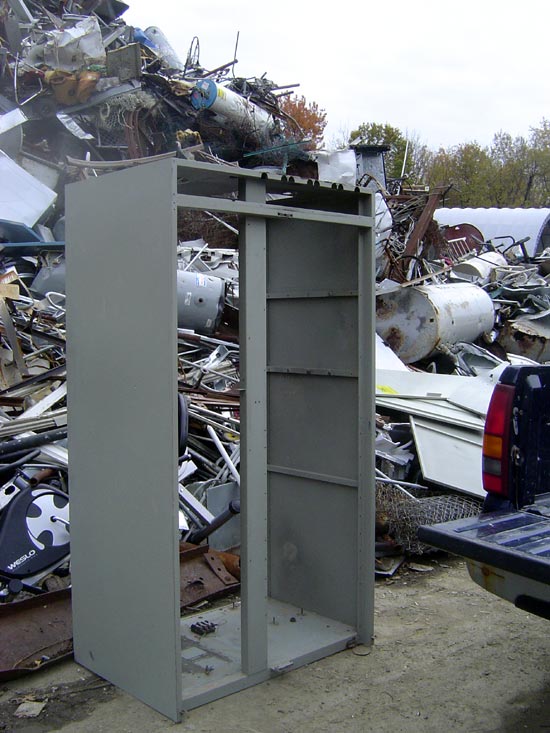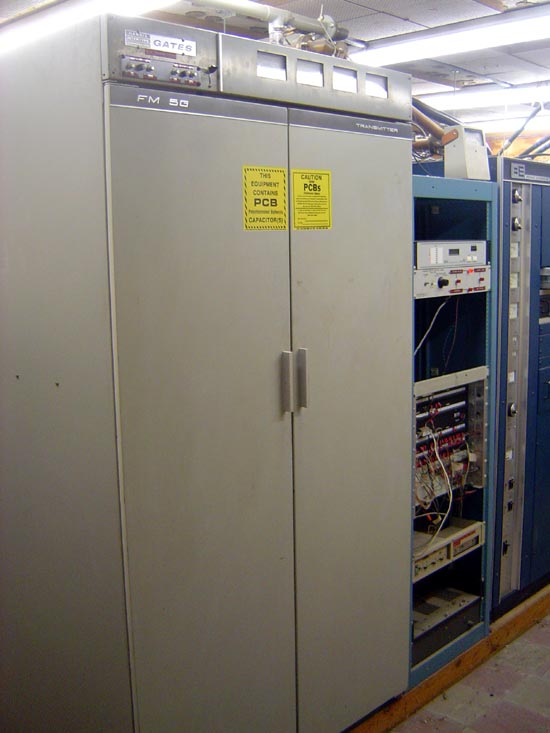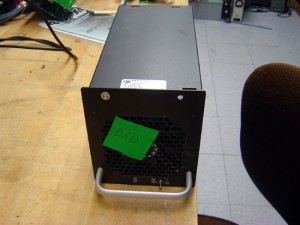Takes its rightful place in the world today, the scrap heap:

As EDWARD I of ENGLAND once said, “A man does good business to rid himself of a turd.”
Of course, he was speaking about Scotsman John Balliol and not some old cranky FM transmitter, but I understand that feeling. The Gates and later Harris transmitters always seemed to be somewhat less than top-notch. The 5G was no exception to this rule. The final step for tuning the transmitter was to turn off the lights in the room and look down through the screen on top to make sure there were no little arcs in the PA tuning section. It also had a way of self-oscillating, which could make for some exciting tuning.

Goodbye, I will not miss you.
In one of my past jobs, I worked in a RCA town. I worked there long after the broadcast arm of that company went out of business, however, all of the broadcast transmitters, AM, FM, TV were made by RCA. I had an RCA FM-20ES1 which was 22 years old, built like a tank and just kept going along. I think that transmitter was finally destroyed in a fire, caused by it’s replacement transmitter.
Old Collins, Contenental, RCA and even Broadcast Electronics transmitters had some heft to them. Of course, not every RCA transmitter was well thought out, the amplifuze series of AM transmitters were a maintenance nightmare.

